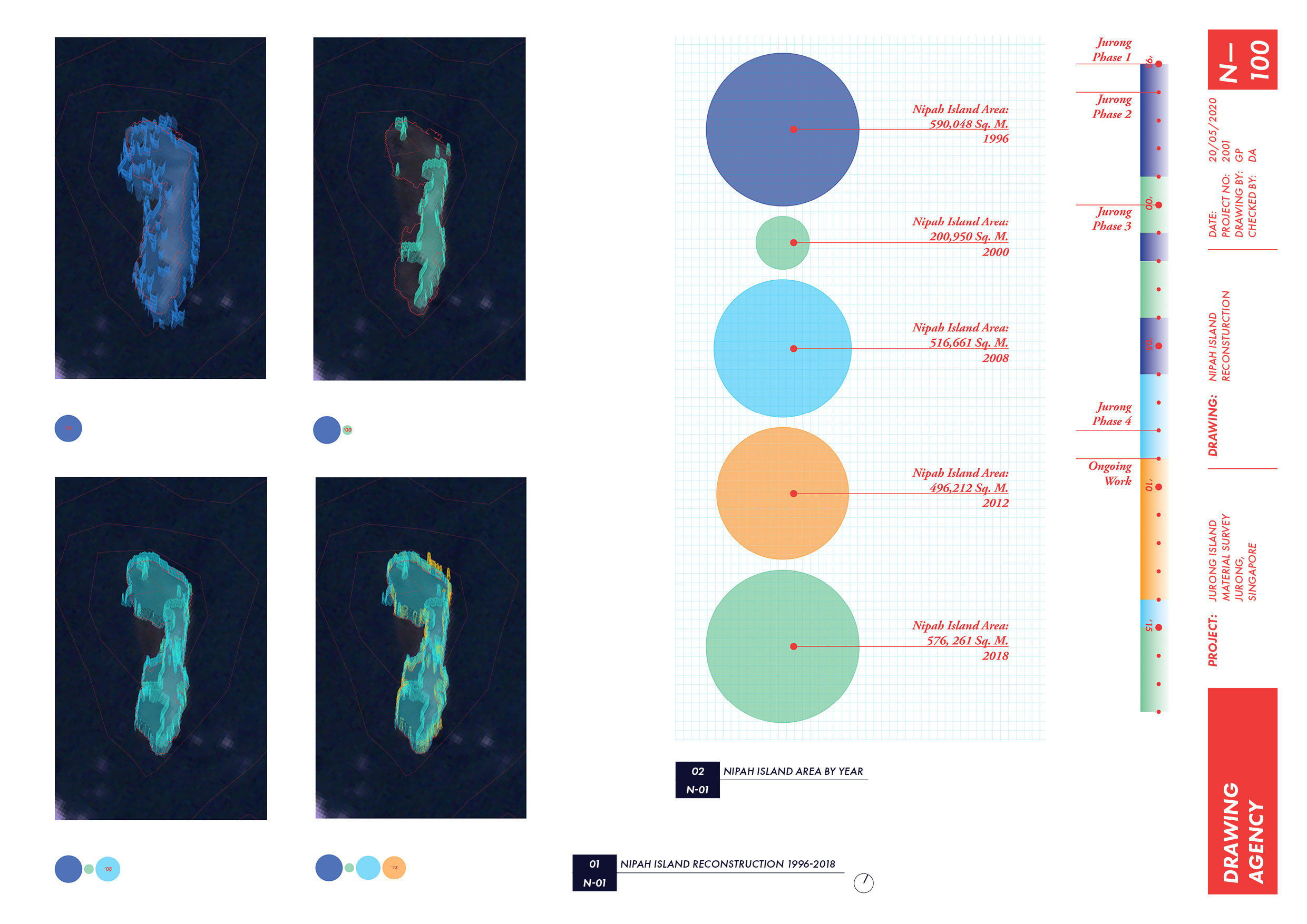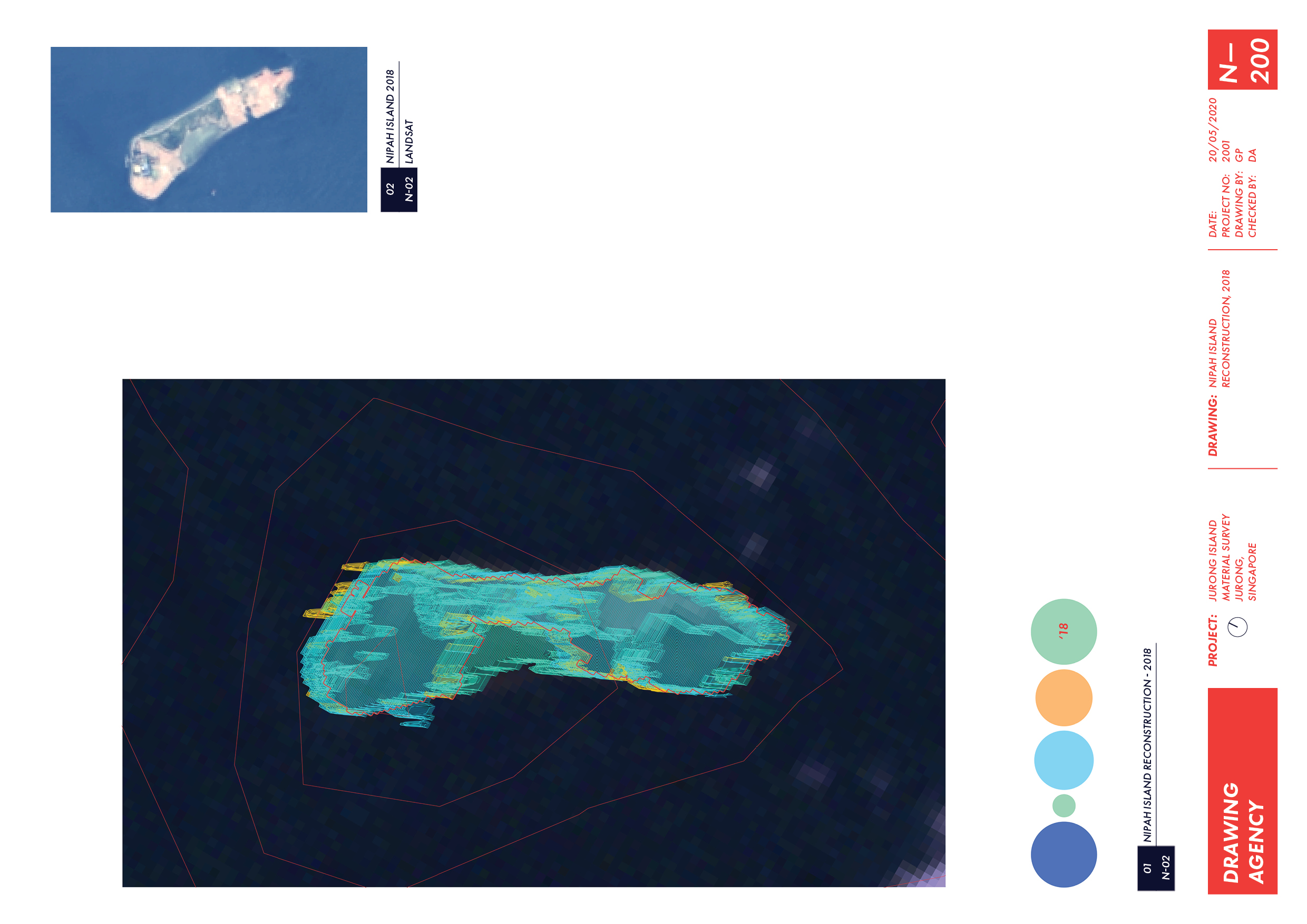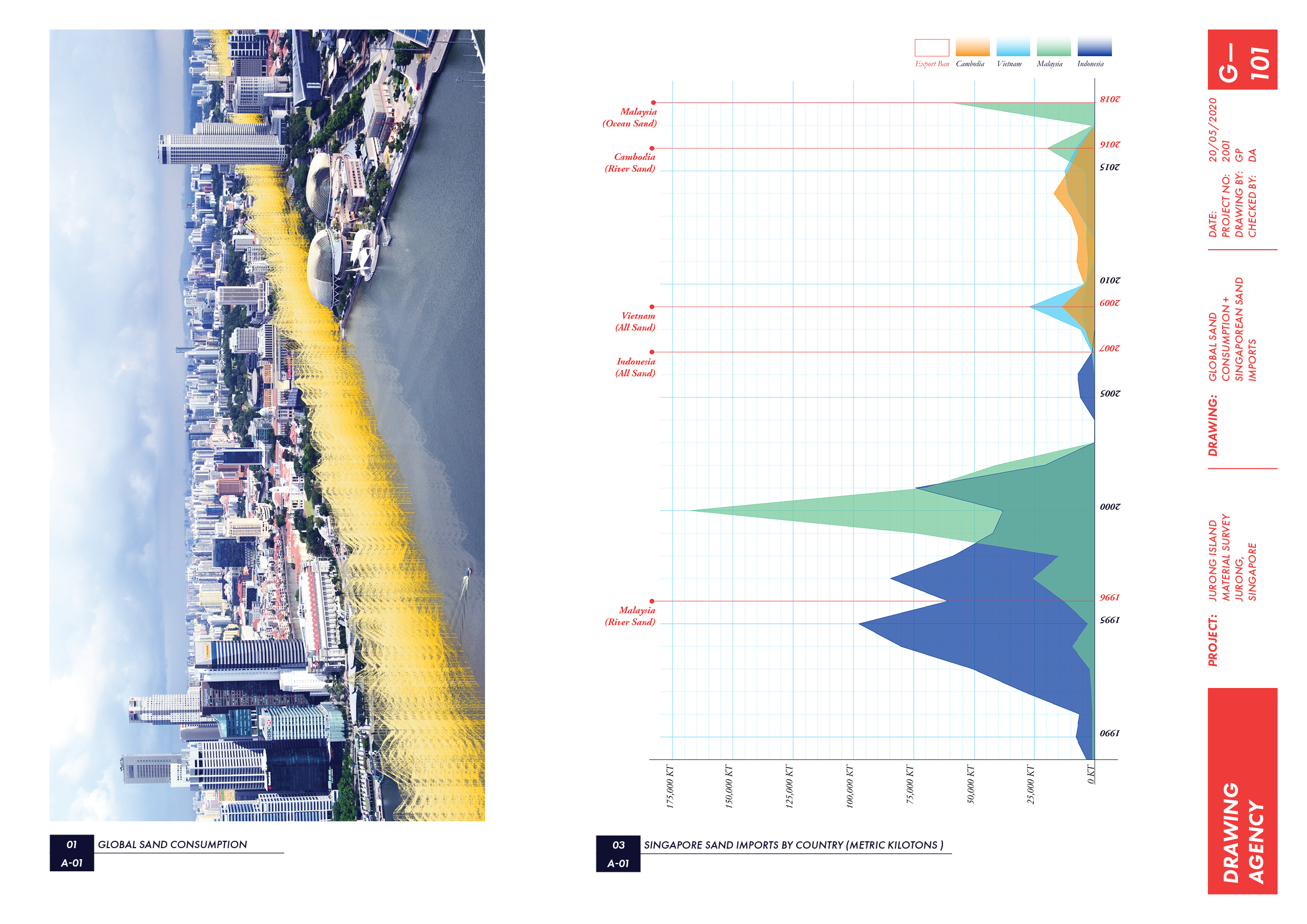A Drawing Set for Two Islands
Architects have many means of establishing the value of our work: hours are time-carded, multiplied, or deemed non-billable. Costs can be measured in financial statements, employee overhead, monthly charges for virtual seats in software licenses, or embodied in carbon. Missing from this repertoire is a method to evaluate the social, infrastructural, and geopolitical externalities of architectural production: in order words, the material-political axis of design.
At a glance, architectural trends today are dominated by either wry ambivalence towards politics at best (the writings of Rem Koolhaas at OMA/AMO, for instance), or willing engagement with authoritarian figures at worst (Norman Foster and Bjarke Ingels’ National Library in Astana, Kazakhstan). As recently as 2014, the late Zaha Hadid washed her firm’s hands of responsibility in Qatar’s horrific treatment of migrant workers laboring to build her al-Wakrah stadium for the 2022 FIFA World Cup— and in January 2020, Bjarke Ingels was photographed taking a meeting with Jair Bolsonaro, Brazil’s climate change-sceptic prime minister on a press tour for a resort master plan. However, in recent years, the conversation has shifted, as advocacy groups like Who Builds Your Architecture, Forensic Architecture, and even more “conventional” offices like MASS Design Group or The Living have led the call to expand architects’ roles as advocates for change, both within the discipline and in the larger context of climate catastrophe. Implicit within any movement towards architectural participation in the pressing issues of the day is the need to both re-articulate values and valuing systems, and interrogate received notions of what should “count” as architectural practice.
External pressures — from climate catastrophe or other societal changes — do not require a re-aestheticizing of the discipline so much as they provide an opportunity to expand architectural vocabulary and practice towards media, information, and advocacy. As a profession, architecture will need to become comfortable engaging with the messy, ambiguous, yet vitally important externalities of its work via clear, understandable vectors of analysis that mirror the pathways through which politics, environment, and economics most directly interface with our discipline. What would a drawing set describing social, political, and environmental entanglements look like? How could the site-specific, flexible, and discrete metrics of material-political externalities be communicated in a coherent set of drawings and documents across scales of space and time?
Printed in PLAT Journal 9.0 “Commit”, Fall 2020
Research for this article was supported by the Graham Foundation for Advanced Studies in the Fine Arts






